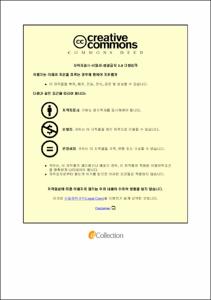Valorization of Tilapia (Oreochromis niloticus) Wastes (Skin, Head and Viscera) Using Green Processes
- Alternative Title
- 녹색 공정을 이용한 틸라피아 부산물 (껍질, 머리 및 내장)의 부가가치화
- Abstract
- In the fishery industry, the consumption of residue and fish waste allows effective uses of the potential fish wastes as food additives, such as Omega-3 fatty acids. Oil extraction from tilapia wastes and by-products were carried out by SC-CO2 at 45°C, 250bar for 3h and n-hexane at 45°C, 250rpm for 16h. Hydrolyzing of deoiled tilapia residues were done by subcritical water at 160°C and 190°C. The overall oil yield from SC-CO2 was 34% and 63.5% from n-hexane extraction. A higher proportion of total saturated fatty acids (SFAs) than monounsaturated fatty acids (MUFAs) and polyunsaturated fatty acids ( PUFAs) was found in tilapia by-products. The acid content of SC-CO2 for the skin, head and viscera was 5.46, 3.35, 7.19 mgKOH/g and the peroxide value were 1.77, 1.34 and 4.48 meq/kg. The FFA SC-CO2 yields 3.62% skin, 1.79% head, and 4.29% viscera, from n-hexane 3.19% skin, 1.69% head, and 4.44% viscera within a reasonable 1-7%. Hydrolysate values ranged from 2.04±0.01 to 7.44±0.01% of samples. The highest and lowest protein and total sugar content were, 4.42±0.79, 31.28±0.92mg/g and 30.06±4.07, 28.51±0.83mg/g respectively. SC-CO2 and n-hexane are the favored techniques in the valorization of tilapia waste containing substantial bioactive compounds that are essential for human and animal health.
- Issued Date
- 2021
- Awarded Date
- 2021. 2
- Type
- Dissertation
- Publisher
- 부경대학교
- Alternative Author(s)
- Achamyelesh Duresa Seboka
- Affiliation
- 부경대학교 글로벌수산대학원
- Department
- 글로벌수산대학원 국제수산과학협동과정
- Advisor
- 전병수
- Table Of Contents
- Introduction 1
1. Background 1
1.1. Objective of the study 3
2. Literature review 3
2.1. Tilapia species 3
2.2. Tilapia wastes 4
2.3. Recovery of bioactive compounds by different extraction techniques 5
2.3.1. Supercritical fluid extraction technology 7
2.3.1.1. Super critical CO2 extraction of lipids 8
2.3.2. Conventional Extraction methods 10
2.3.2.1. Hexane extraction 10
2.3.3. Subcritical water hydrolysis 11
3. Materials and methods 13
3.1. Sample preparation 13
3.2. Experimental chemical and reagents 13
3.3. Oil Extraction Methods 13
3.3.1. Hexane Extraction 13
3.3.2. SC-CO2 extraction 14
3.4. Quality evaluation 17
3.4.1. Color 17
3.4.2. Viscosity 17
3.5. Oil stability evaluation 17
3.5.1. Acid value (AV) 17
3.5.2. Peroxide Value (POV) 18
3.5.3. Free fatty acid value (FFA) 18
3.6. Fatty acid composition analysis 19
3.7. Radical scavenging activity 19
3.7.1. DPPH+ radical scavenging activity 19
3.7.2. ABTS+ radical scavenging activity 20
3.8. Subcritical water hydrolysis 21
3.8.1. Protein content 23
3.8.2. Total sugar 23
3.8.3. Maillard reaction product measurement 23
3.8.4. pH measurement 24
3.9. Statistical analysis 24
4. Result and discussion 24
4.1. Percentage of oil extracted 24
4.2. Color of Tilapia by-product oil 27
4.3. Viscosity 28
4.4. Acid value and peroxide value 30
4.5. Free fatty acid value (FFA) 31
4.6. Radical scavenging activity 33
4.6.1. DPPH+ scavenging activity of Tilapia by-product 33
4.6.2. ABTS scavenging activity 33
4.7. Fatty acid composition of fish oil extracted 35
4.8. Total yield, protein, and total sugar content of hydrolyzate 39
4.8.1. pH of DTW 42
4.8.2. Color and Maillard reaction 42
4.8.3. Antioxidant activity of DTW 45
5. Conclusion 47
Acknowledgement 48
- Degree
- Master
- Appears in Collections:
- 글로벌수산대학원 > 국제수산과학협동과정
- Files in This Item:
-
-
Download
 Valorization of Tilapia (Oreochromis niloticus) Wastes (Skin, Head and Viscera) Using Green Processe.pdf
기타 데이터 / 1.22 MB / Adobe PDF
Valorization of Tilapia (Oreochromis niloticus) Wastes (Skin, Head and Viscera) Using Green Processe.pdf
기타 데이터 / 1.22 MB / Adobe PDF
-
Items in Repository are protected by copyright, with all rights reserved, unless otherwise indicated.